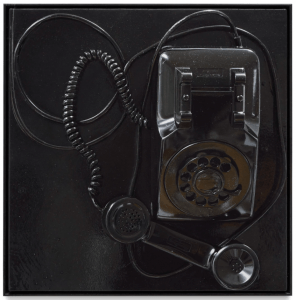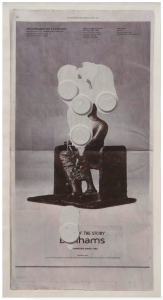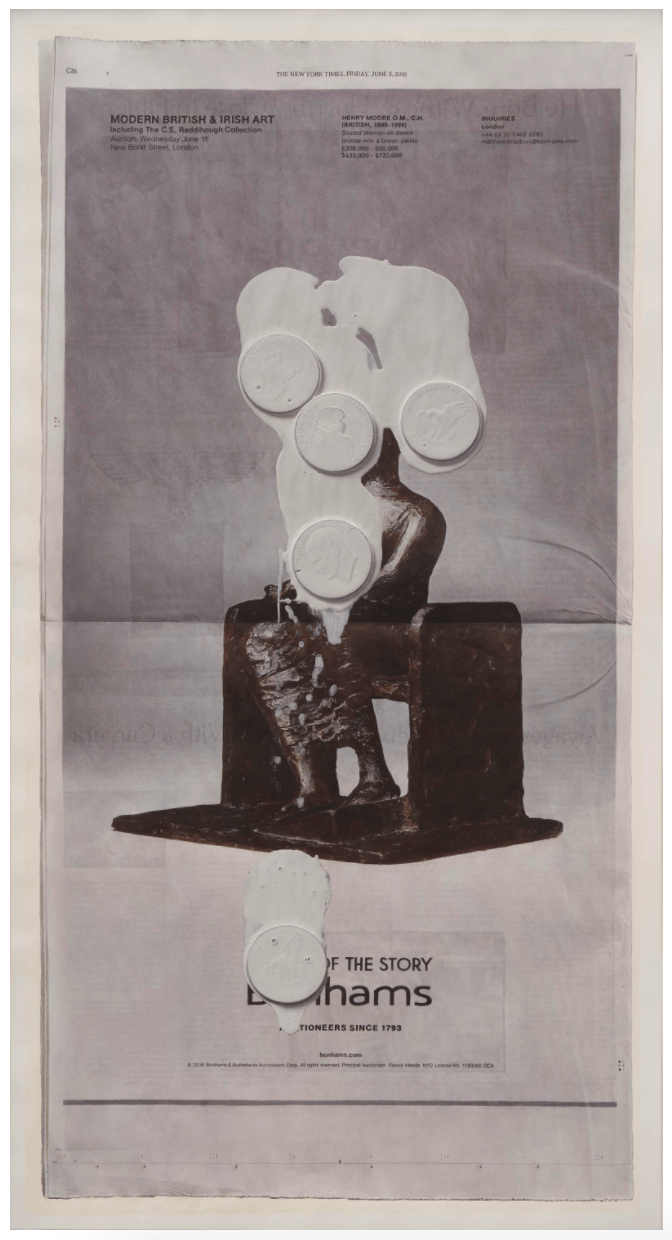In the 1960s, native New Yorker, Marian Goodman co-founded a publishing firm named Multiples, Inc. In broad terms, this company produced books, multiples, and prints by both American and European artists. Given that at the time there was significantly less interaction between European artists and American audiences versus today, Multiples, Inc. became well-known for bridging this gap. Moreover, when Goodman could not find an American gallery to represent Belgian artist Marcel Broodthaers in 1974, she realized just how wide the divide was. She believed that at its core American disinterest in European contemporary art arose simply from a lack of exposure. Thus, she decided in 1977 to open her own gallery and personally represent these European artists in America. After 18 prosperous years at her New York location, Goodman expanded by opening an additional brick and mortar location across the Atlantic. In 1995 she opened this temporary exhibition space in Paris, and then in 1999 she found a permanent home for the gallery at the Hôtel de Montmort: a historic mansion in the third arrondissement. Built in the 1600s, this private residence was home to the Montmort family for many generations, who frequently hosted the French scientific elite. Two centuries later, after the Montmorts had sold the space, it was repurposed as a candle factory, and later a jewelry studio. Not too far away, Marian Goodman also opened a second location in Paris which is called the Librairie, and is part bookstore, and part exhibition space. Beyond Paris, in 2014, Marian Goodman opened a location in London, which was an 11,000 square foot space in a former factory designed by renowned architect David Adjaye. Unfortunately because of Covid and Brexit the gallery ultimately closed this space.
Thus it makes sense that today this international focus of the gallery remains. In fact on their website it says, “for over forty years, Marian Goodman Gallery has played an important role in introducing European artists to American audiences, and helping to establish a vital dialogue among artists and institutions working internationally.” Overall, the gallery represents approximately 50 contemporary artists many of whom are not American, and a large percentage of which are extremely well known. Across all of their exhibition spaces there are currently four shows on display. Two of these exhibits are in New York, and the other two are in Paris.
For our class excursion, we visited Paul Sietsema’s show at the Galerie, which is the West Coast artist’s first major solo exhibition in France. Before even getting into the artworks, it is important to note that I found the Galerie space itself to be striking for multiple reasons. First, I believe that – for better or for worse – the Galerie’s location in a historic mansion makes it unwelcoming to young, as well as non-wealthy visitors. Since visitors can only enter the ornate building by requesting access via an intercom, it is natural that the average person may feel as though it is a space they don’t necessarily belong in.
In stark contrast to the above point, it should be noted, that even though our group was made up entirely of non-collector students, we were greeted by gallery staff with immense kindness and graciousness.
For example, there was no pretention, or condescension in our host’s voice when she invited us to get up close and personal with the painting titled Woman Sitting. She seemed to authentically share in our excitement about the fact that the work was a painting. She went on to assure us that it was natural to have read the piece as being mixed media since its surface did appear to be raised; and we did not need to be embarrassed for not recognizing that this incredible raised effect was achieved using only layers of paint.

In the same vein, she eagerly explained to us that works like Black Phone Painting contain such incredible detail because Sietsema uses photographs as a visual guide as he paints. Moreover, she passionately explained to us that the hyperrealism in that particular work is also made possible by its materiality: the work and what it figures are identical in makeup. In other words, the painting we saw hanging on the walls was created using the exact same spray-paint that Sietsema had initially sprayed the phone with before photographing and then painting it. As a result, the way light is depicted in the work is unbelievably realistic.

Last, she explained to us that Sietsema created Vertical Newspaper using the same objects it visually figures. In fact, I believe the smudges of white paint, the coins, and the newspaper advertisement are all so visually striking to viewers in part because this combination of objects was born in reality. As our host described, Sietsema genuinely rubbed paint over newspaper using coins, and then proportionally scaled up what he saw and painted it. Since I’m interested in working in the art market after graduation the combination of coins, and a Bonhams advertisement was also fascinating to me because it immediately evoked the fraught philosophical relationship between prices and artworks in the contemporary art market. Moreover, it was shocking that of all the coins in the world, Sietsema chose to depict the large and cumbersome Eisenhower U.S. dollar coin, which is virtually out of circulation today. I’m not sure exactly what to make of this, but it certainly makes me think about the growing obsolescence of coins, and worldwide shift towards digital payment. This work also struck me because of its immense attention to detail. As we learned during our visit, Sietsema skillfully added faint marks to visually figure the recto side of the newspaper. Last, the piece was of particular interest to me because the Bonhams advertisement is promoting the sale of a Henry Moore work. As a student of UChicago, Moore’s work always catches my eye since he designed the statue commemorating the Enrico Fermi self-sustaining nuclear reaction, which still sits today just outside Mansueto library.

Overall even though our visit to Marian Goodman gallery may have initially awoken our imposter syndrome, the kindness of our hosts ultimately erased any unease we may have had about being there, and made the experience incredibly comfortable and thought provoking.

David, this is a wonderful account of the visit to Marian Goodman that is attentive to the contradictions of the space as well as it efforts to welcome viewers to the experience of contemporary art. Wow. Either I did not know or had forgotten that Sietsema made the Fermi sculpture on campus. I appreciated as well your attention to Rafaele’s comments and explanations, and how they seemed to open new perspectives on the work, especially in its own investigations of the relation between art and money. Excellent work!
Thanks so much!
Sietsema actually didn’t make the Fermi sculpture – instead this work by Sietsema figures a sculpture by Henry Moore the artist who did!